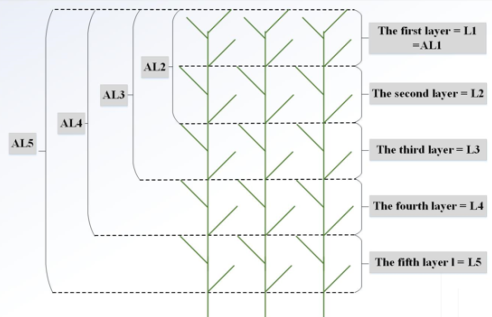Nitrogen is one of the key elements of wetland pollution and eutrophication, and an important and indispensable nutrient elements for wetland plant growth and development. The total nitrogen concentration (NC, g/100 g) of wetland plants is an important parameter to estimate the wetland health status and to calculate the nitrogen storage of wetland plants. Remote sensing has been widely used to estimate biophysical, physiological, and biochemical parameters of plants. However, current studies place little emphasis on NC estimations by only taking nitrogen’s vertical distribution into consideration, resulting in limited accuracy and decreased practical value of the results.
Associate Professor Juhua Luo from Nanjing Institute of Geography and Limnology CAS and others estimated the total nitrogen concentration of reed canopy with hyperspectral measurements considering a non-uniform vertical nitrogen distribution. The main goal of this study is to develop a model, considering a non-uniform vertical nitrogen distribution to estimate the total NC of the reed canopy, which is one of the wetland’s dominant species, using hyperspectral data. Sixty quadrats were selected and measured based on an experimental design that considered vertical layer divisions within the reed canopy. Using the measured NCs of different leaf layers and corresponding spectra from the quadrats, the results indicated that the vertical distribution law of the NC was distinct, presenting an initial increase and subsequent decrease from the top layer to the bottom layer. The spectral indices MCARI/MTVI2, TCARI/OSAVI, MMTCI, DCNI, and PPR/NDVI had high R2 values when related to NC (R2 > 0.5) and low R2 when related to LAI (R2 < 0.2) and could minimize the influence of LAI and increase the sensitivity to changes in NC of the reed canopy. The relative variation rates (Rv, %) of these spectral indices, calculated from each quadrat, also indicated that the top three layers of the reed canopy were an effective depth to estimate NCs using hyperspectral data. A model was developed to estimate the total NC of the whole reed canopy based on PPR/DNVI with R2 = 0.88 and RMSE = 0.37%. The model, which considered the vertical distribution patterns of the NC and the effective canopy layers, has demonstrated great potential to estimate the total NC of the whole reed canopy.

Conceptual diagram of vertical layer division within the reed canopy
JuhuaLuo, Ronghua Ma, Huihui Feng, et al. Estimating the Total Nitrogen Concentration of Reed Canopy with Hyperspectral Measurements Considering a Non-Uniform Vertical Nitrogen Distribution. Remote Sensing, 2016, 8(10): 789.
Research results have been published in the Remote Sensing (IF: 3.036)which is the main publication of the remote sensing science.
Paper link: http://www.mdpi.com/2072-4292/8/10/789/htm
(Information source: Nanjing Branch of CAS)

